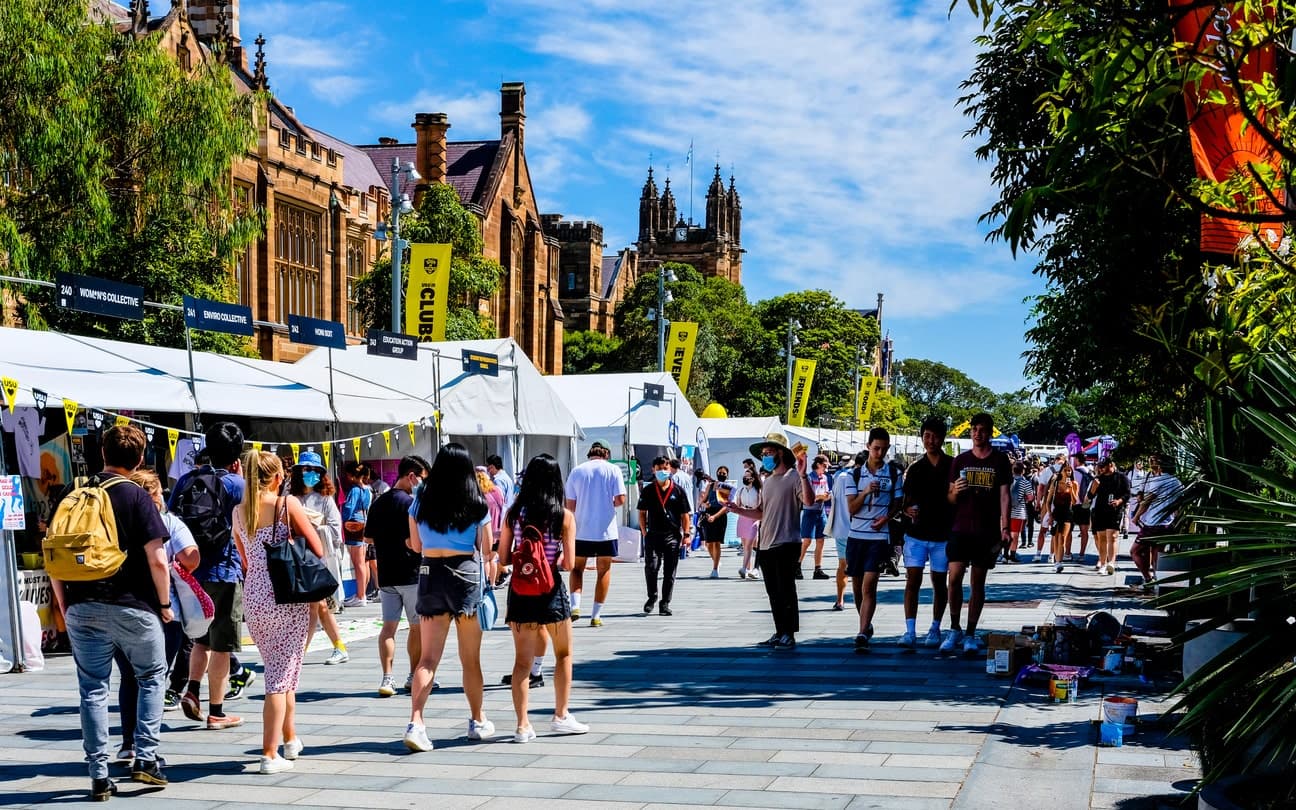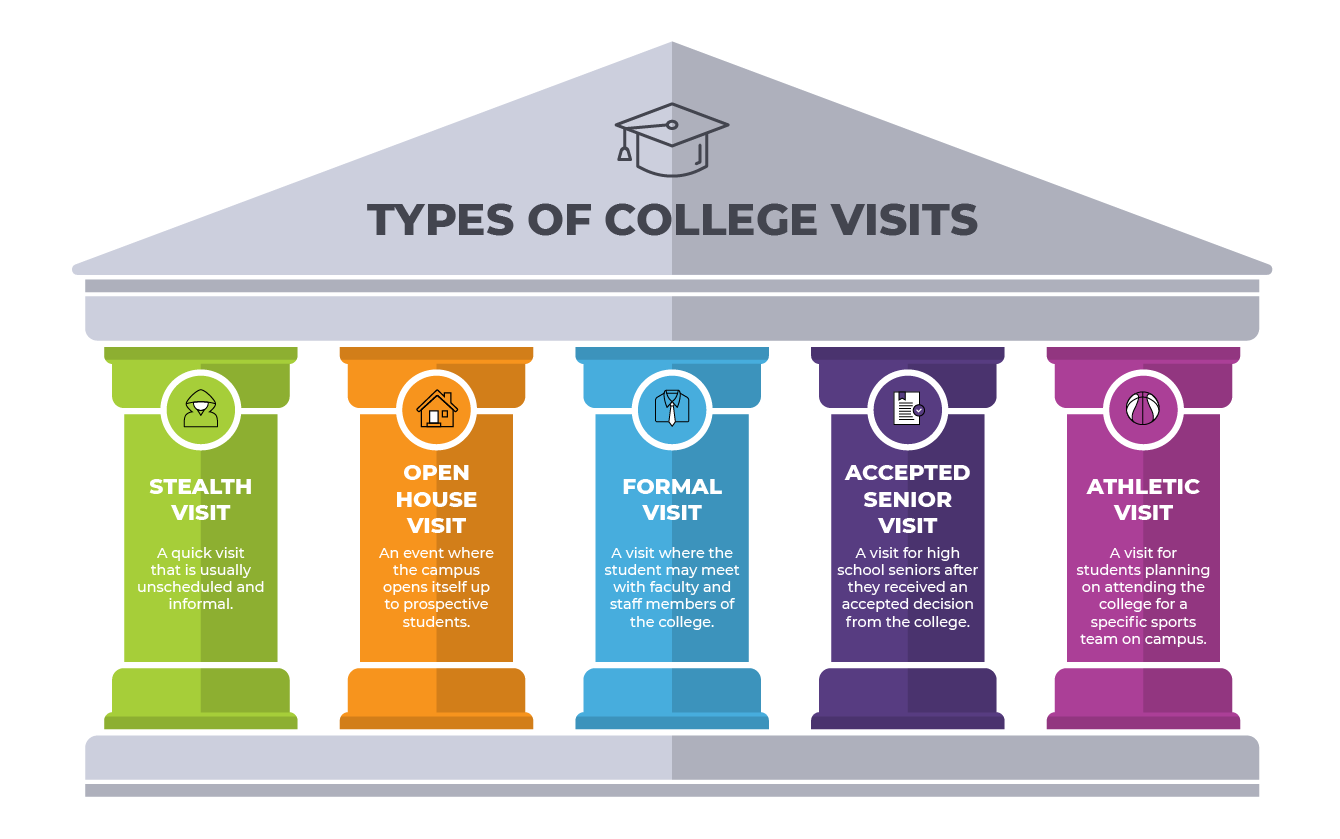A Comprehensive Guide to Maximizing Your College Campus Visit
Written by Knovva Academy Staff

Embarking on a journey to select the perfect college can be both exciting and overwhelming for high school students. One crucial step in this process is visiting colleges you plan to apply for.
A college campus visit offers an invaluable opportunity to explore academic programs, campus facilities, and student life, helping you make an informed decision about your future. Most Junior year students visit three to five college campuses in the spring time, but the amount of colleges depends on a number of factors, such as proximity, interest, and how many you plan to apply for. In this comprehensive guide, we'll delve into strategies and tips to help you get the most out of your college campus visits.
Understanding the Importance of Visiting Colleges
Before diving into the specifics of campus visits, it's essential to understand why they matter. While websites and brochures provide valuable information, nothing compares to the experience of being on campus.
A campus visit allows you to assess the campus culture, interact with current students and faculty, and envision yourself as a part of the community. It's a chance to evaluate whether a college is the right fit for your academic, social, and personal growth.
Types of college campus visits
There are 5 primary types of college visits

Stealth Visit
This is a quick visit that requires no pre-planning. Usually the students will show up informally at the college and look around the campus on their own. They won’t take part in any faculty meetings or group tours of the facilities.
This type of visit is ideal for students who have already narrowed down their top-choice schools. It gives students greater insight into the daily life on campus.
Open House / Campus Day Visit
The open house is a large-scale event that takes place at a college and welcomes students for a general introductory meeting. Also know as Campus Visit Day, the college may organize events throughout the campus to promote their school.
Students attending this event can learn more about the extracurriculars and amenities on campus, but because this is a large event with sometimes hundreds of attendees, it isn’t ideal for getting an intimate look at student life.
Formal Visit
A formal visit usually relates to one-on-one meetings with faculty members as well as administrators. Students may have a meeting with admissions counselors all the way up to the Dean of Students.
This type of visit may take place early in the application process when a student first goes to campus for a college interview. It may also take place after the student was accepted. While this visit can shed light on the campus lifestyle, the focus is on the student performing. Usually it is a meeting for the student to showcase why they’re a good fit for the campus, not the other way around.
Accepted Senior Visit
This type of visit takes place after the college admissions process and final decisions are made. High school seniors who plan to attend the college may schedule one more visit before the school year. Likewise, some colleges group the Accepted Senior Visit into their Orientation week.
Orientation week occurs when incoming freshmen stay in the campus dorms and get a feel for the local environment and college experience.
Athletic Visit
The athletic visit is ideal for student athletes who plan on attending college for a specific team. This type of visit may only be available to students who have already been accepted and received a promise for their athletic scholarship, though in some cases it’s also open to students before they make final a decision.
While the student will have a chance to see the primary campus buildings, like the dorms and cafeteria, the tour will focus on the sports facilities.
1. Start with Preparation
Preparation is key to making the most of your college campus visits. Start by researching the colleges you plan to visit, and ask yourself why you want to visit that particular school. Is it because of their academic programs, or amazing on-campus facilities?
Create a list of questions you want to ask during your visit, covering topics such as majors, class sizes, housing options, financial aid, and student support services.
It’s not easy to substitute an in-person visit, but many colleges also offer virtual tours so you can still ask questions and see some of the campus facilities. Students may prefer this option in case they don’t live close to their dream school or have personal reasons for not visiting in-person.
You might also want to get a feel for student life on the campus before the tour. Check on Facebook for student groups, or search with the school name in a hashtag on Instagram or TikTok. Here you might find students currently enrolled who you may connect with.
2. Schedule Your Visit
Once you've narrowed down your list of colleges, schedule campus tours and information sessions in advance. Most colleges offer online booking systems or allow you to schedule visits through their admission offices, and require you to do so at least a few days before your scheduled arrival.
Choose dates that align with your availability and try to visit during the academic year when classes are in session to get a true sense of campus life. If you’re going to a big college town, like Boston, Massachusetts where there is a big concentration of colleges in a short distance, check if there are any other colleges you might want to visit during your stay.
3. Plan Your Itinerary
Before your visit, plan your itinerary to make the most of your time on campus. Coordinate campus tours, information sessions, academic department meetings, and meetings with admissions counselors.
While the tour itself will be fast-paced and informative, you can learn a great deal about campus life by simply spending some time on the premise. Leave some time to explore the campus independently and soak in the atmosphere after your tour. A good way to do this is have a snack in the campus cafeteria (if its possible), or sit in the campus green area.
4. During Your Visit
Campus tours usually last between one and two hours and are conducted by a faculty member or student who’s currently enrolled. The campus tour will usually lead through the most important buildings, like academic facilities, residence halls, dining options, and recreational areas. Pay attention to the campus layout, amenities, and overall vibe.
If a student is leading the tour, this could be a good opportunity to ask some questions about life as a student, but the feedback may be biased.
Here are a few other recommendations for maximizing your time during a college visit:
Participate in Information Sessions: Attend information sessions hosted by the admissions office to learn about the college's history, mission, academic offerings, admission process, and financial aid opportunities. Take notes and ask questions to gain a deeper understanding of the college.
Visit Academic Departments: Schedule meetings with academic advisors or faculty members in your intended major to learn more about specific programs, research opportunities, internship placements, and career outcomes. Ask about class sizes, faculty-student ratios, and hands-on learning experiences.
Explore Campus Life: Take time to explore campus life beyond academics. Visit student centers, clubs, and organizations to learn about extracurricular activities, student leadership opportunities, and campus traditions. Talk to current students about their experiences and involvement in campus life.
Experience the Surrounding Area: Venture off-campus to explore the surrounding area and get a feel for the local community. Visit nearby neighborhoods, cultural attractions, restaurants, and recreational spots to gauge your comfort level with the location.
Take Photos and Notes: Capture your campus visit experience by taking photos and jotting down notes about your impressions, observations, and insights. Keep a record of important details, such as deadlines, contact information, and key takeaways from each visit.
5. After Campus Visits
After each campus visit, take time to reflect on your experience and evaluate whether the college aligns with your academic and personal goals. Consider factors such as campus culture, academic offerings, student support services, and overall fit.
You might have also received a few business cards or contact information from representatives at the college. Follow up with them to express your appreciation for the opportunity to visit and ask any additional questions that may have arisen. Send thank-you emails to admissions counselors, faculty members, and student tour guides to maintain positive connections with the colleges.
Creative Ways to See More of Your College Campus
Informal visits are usually the best way to get a candid snapshot of life on campus. Experts agree that if you can squeeze in a stealth visit before making any final decisions, you’re likely to see normal campus life day-to-day, rather than when an event takes place.
A few other notable things to do:
Check out the:
Library: Take a look at the library on campus and the amenities. Does the library have laptops or tablets you can rent? Are there quiet rooms where you can study peacefully?
Cafeteria: Walk into the cafeteria and see what they offer for food and drinks. Are there a range of healthy options? What about options for those with dietary restrictions?
Academic Departments: If you’re planning on a specific major, make sure to walk around the department it’s connected to. See what the office looks like, as you may spend a majority of your time there.
Green Spaces: Nature can make a significant impact on your overall health and well-being. Check the different green spaces both on and around the campus.
Find out about:
Weekend Activities: What things are there to do on the weekends? Is there a town nearby, or popular swimming spot?
Student Perspectives: While in the cafeteria, or while walking around campus, ask a student who’s currently enrolled what their perspective on the school is. What do they like/dislike about the campus? Is there anything they wish the campus had?
Campus Media: Does the campus have a radio station, student-published newspaper, or literary journal? Try to pick up as much campus media as possible to gain better insight into the creative spaces available for students.
Other Campuses: If your campus has surrounding colleges nearby, then there’s a big chance you’ll meet with those students as well. Learn about the campus environment of the other colleges in the area and what they’re known for.
The Local Community: What’s the surrounding area outside of the campus like? Is it s rural town, or a big city? This will largely impact your weekend activities, as well as your overall satisfaction at college. Take some time to understand the environment around you.
Final Thoughts About Campus Visits
College campus visits play a crucial role in the college selection process, offering valuable insights into campus life, academic programs, and overall fit. By adequately preparing for your visits, planning your itinerary, and actively engaging with the campus community, you can make the most of your college campus visits and ultimately find the college that best matches your aspirations and interests.